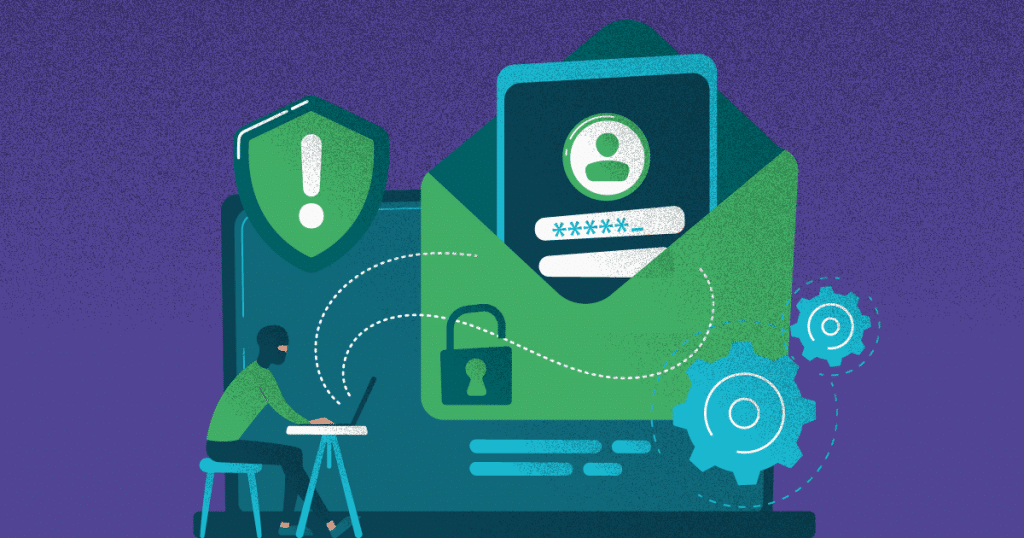While making sure that your digital infrastructure is well protected, you must take some time to learn about various kinds of threats that roam the web. This includes protecting yourself against the threat of being a part of a botnet.
Have you ever heard of botnets? This means having your computer become part of an army dedicated to illegal activities on the internet without your consent. In many cases, it is quite difficult to notice your system has been taken over.
That is why you should put cybersecurity among your top priorities.
Learning about the issue and implementing the appropriate measures will protect your systems and your users while preventing grave issues from targeting your infrastructure.
Are you ready to know more? Here is everything you will learn in this article:
What is a botnet?
A botnet is a group of infected devices that are taken over by a hacker in order to obey their commands, which usually involves triggering attacks on other systems.
This happens by turning regular people’s computers into “zombies” that receive remote commands without their consent.
As you can see, having your computer become part of a botnet is highly dangerous. Not only will you lose processing power and network performance, but this also means your device will become a part of an army focused on performing illegal activity online.
Among those are included the launch of Distributed Denial of Service (DDoS) attacks on rival websites or services, the distribution of spam emails or malware, the mining of digital currencies and others. Lastly, it is not always easy to notice your computer became a part of a botnet.
Such attacks are possible either because of vulnerabilities in your system or mistakes made by the user. For example, a member of your team might click on a malicious link on an email disguised as legitimate. The result might be a whole network of infected devices.
Below, you can find out more about the different types of botnet.

Client-Server
Also known as a centralized model, this type of botnet consists of a single controlling server that manages the entire network. Its work involves searching for vulnerable devices and taking advantage of them to grow the botnet.
Its simple format is the reason it is still popular nowadays. However, having a single point of failure means it is a risky solution for malicious users. After all, in case the main server goes down, the entire botnet deactivates along with it.
Peer-to-Peer
This type of botnet is also known as a decentralized model. Unlike the client-server kind, it operates independently of the main server. Instead, the bots share information among themselves while infecting new machines and increasing their size.
Because of the way this activity structure works, it is much harder to detect and contain than the centralized model. After all, it requires the complete dismantlement of the network to restrict its activities.
How does a botnet work?
Now that you know what a botnet is, it is time to learn how it works.
The term botnet is actually the combination of the words “robot” and “network”. It alludes to the fact that this activity’s goal is to infect as many machines as it can to add to its network to perform illegal activities in strong numbers.
A botnet is successful when it is able to infect a computer without the user knowing and spreading to other machines to add to its network. The more sophisticated the system is, the harder it might be to detect, especially if security measures are weak.
Over the years, botnet attacks never stopped being dangerous and common. This is because there is currently no global effort dedicated to preventing them and proper cybersecurity tactics are not widely spread among businesses and individual users.
Additionally, botnets can spread in two main ways:
- passive spread, which requires user input. This is the case, for example, of accessing a website that runs a malicious JavaScript code that can infect your computer or any other kind of malware transmission. This also includes social engineering tactics;
- active spread, which does not require user input. In this case, the botnet is able to find other victims to turn into hosts on the web and spread independently. It succeeds by scanning for specific vulnerabilities it can exploit.
How to detect and prevent botnet attacks?
Understanding what botnet attacks are is the first step to protecting your devices. However, there are other steps you need to take to make sure your digital infrastructure does not suffer from such unauthorized access. By adding them to your daily routine, you can contribute positively to your cybersecurity.
Here are the most important ways you can detect and prevent botnet attacks on your devices. Check them out!
Configure a firewall for all your devices
A firewall is a security layer you can add to your network, which helps to prevent unauthorized access and allows you to control which programs and applications can access the web. This cybersecurity tool is essential not only to your computer but to any other device you use on your network.
That is why you should make sure that your firewall is installed at your network level. If that is not possible, simply make sure that all your devices are properly configured to use a firewall individually. This includes any laptops, smartphones, tablets and IoT devices.
Train your team in cybersecurity
The human factor is among the most important when considering cybersecurity and botnet prevention tactics. This means you need to properly train your team to detect and prevent attacks such as this to protect your business infrastructure.
This includes learning to identify vulnerabilities, how to apply corrections and even the best practices when dealing with digital processes. Additionally, this training needs to happen periodically and always include new staff members.
Work with secure solutions
The software your business uses might be responsible for serious security flaws in your network. This also applies to cloud solutions in case they are able to serve as a backdoor into your system and data.
That is why you should be mindful of the security infrastructure your software has. For example, if you use an insecure server-based solution for managing your data, you might be putting your entire network at risk.
Restrict access accordingly
Network utilities and devices usually have permission settings you should configure correctly in order to prevent malicious attacks. By making sure only certain kinds of accounts can see and modify specific aspects of your infrastructure, you are able to restrict a takeover such as a botnet attack.
Take a look at the documentation for the devices and solutions you use and make sure to set permissions accordingly. Consider what each department and staff members need and only give full access to those that really need it.
Use an antivirus software
There are great antivirus solutions available in the market that keep your system protected and prevent attacks on vulnerabilities such as those that turn into botnets. Those might also be capable of scanning downloads in real-time.
Consider the features offered in each antivirus solution while thinking of your business demands. For instance, if you work with multiple IoT devices, then you need a software that supports them. It is even better when such a solution has specific measures against botnet attacks.
Keep your software always up to date
Many security vulnerabilities take advantage of known security holes in software. That is why you need to make sure they are always up to date, since developers routinely patch those issues to prevent attacks and unauthorized access.
This is particularly important for Internet of Things devices. Check whether your software has automatic updates and turn them on to always have the most up to date solutions running. In case you use cloud-based solutions, this might not be necessary since they almost always run the latest versions.
Learn to detect unusual activity
A botnet is usually successful when it is able to infect devices without the user knowing and spreading around from there. That is why you should know how to spot any unusual activity that might point to a botnet.
For starters, keep an eye out for your network traffic. You should be able to identify everything coming in and out. Also, make sure that the processing power of your devices is being used appropriately. By only keeping essential software installed, you can keep the risk of breaches to a minimum.
By learning more about how a botnet works and implementing the appropriate measures in your network, you can make sure your system is protected against such threats.
Consider the tips in this article to prioritize cybersecurity and make sure your data is secure and keep an eye out for trends in tech and security to learn of any new information on this subject.
Have you ever had to deal with a botnet? Tell us in the comments how it affected you and how you prioritize cybersecurity right now.







